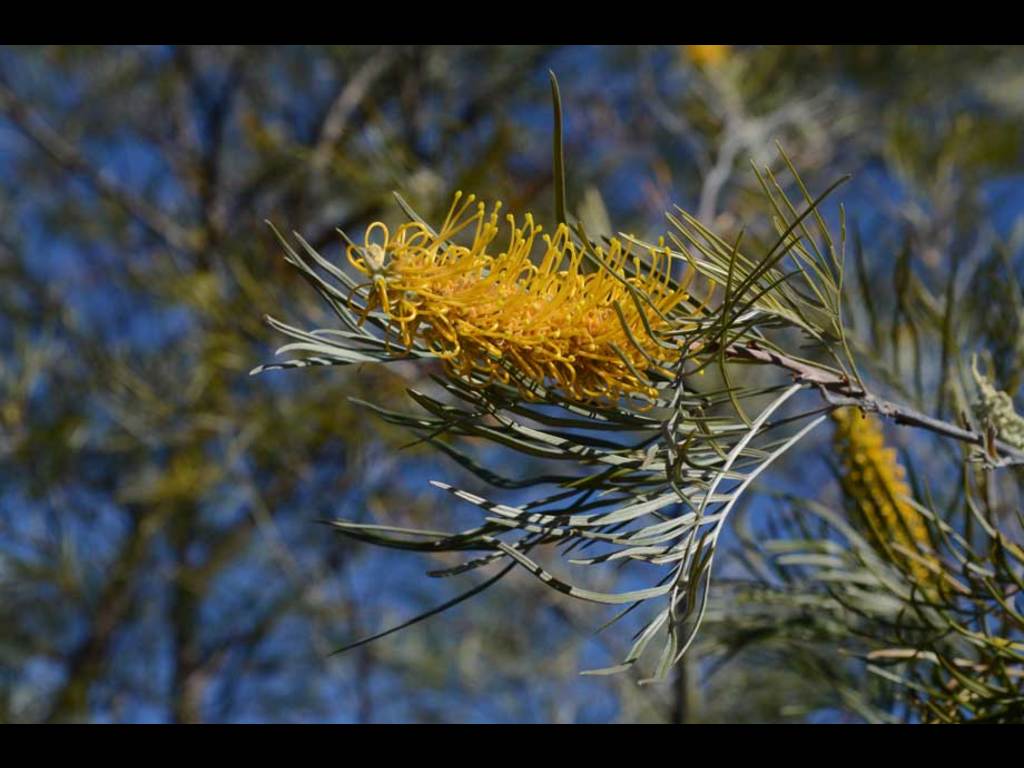Grevillea 'Sandra Gordon'
- File Number
- 114
- ACRA Field Book Number
- -
- Registration Date
- 17/08/1977
- Application Received
- 15/09/1976
- Family
- Proteaceae
- Cultivar Name
- Grevillea 'Sandra Gordon'
- Origin
- Grevillea 'Sandra Gordon' is said to be a hybrid between G. sessilis and G. pteridifolia. It occurred as a spontaneous seedling in about 1966 on Mr David Gordon's property, "Myall Park" at Glenmorgan, Queensland. It is said to be a very hardy and robust small tree. Cultivar received by the Authority 15 September 1976.
- Characteristics
- The leaves are very deeply lobed and are about 200mm long by approximately 150mm wide. Individual lobes are very fine being 1.5-4m wide. Occasionally the lobes are sub-divided into two. The upper surface is shiny green whilst the underside is covered with silvery hairs. The leaf edges are rolled under. The flowers encircle the stem and are produced terminally. The rachis or stem on which the flowers are borne extends a short distance beyond the last floret as in G. sessilis. The bright yellow flower heads, which are produced in profusion over a long period, are about 120mm long by about 80mm wide. The very woolly perianth tube is about 8mm long. The styles, which are the colourful parts of the inflorescence, are about 30cm long. Diagnosis: This cultivar is different from its parents in that the foliage is intermediate with perhaps a greater affinity to G. pteridifolia. The habit also tends to be intermediate. The flower colour differs in that it is lighter than is usually seen in G. pteridifolia and a much richer colour than is usual for G. sessilis. The flowers encircle the rachis as in G. sessilis but not in G. pteridifolia.
- Cultivation
- Performs best in an open to semi-shaded situation in well-drained soils. Severe frosts (-3C and below) burns the softer new growth, but mild frosts are tolerated. It responds well to pruning, helping to keep a more compact shape.
- Publication
- Australian Cultivar Registration Authority (1979), Australian Plant Cultivars. Australian Plants 10(80): 169
- Colour Coding
- RHS Colour Chart 1966 edition.perianth tube and limb: near yellow-orange 16d.style: yellow-orange 15A.
- Propagation
- Cuttings from semi-firm new growth
- Applicant Name
- Mr D Gordon.
- Uses
- As part of a mass planting or mixed in a shrubbery, or as a spectacular feature plant. Attracts nectar feeding birds.
- Availability
- Windyridge Nursery
- ANBG Accession Numbers
- ACC114; CBG068686/8701102.
- NSL ID
- -

